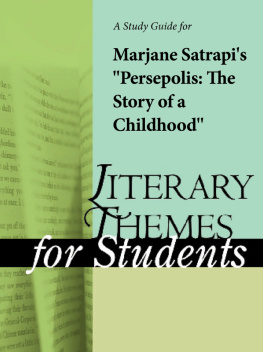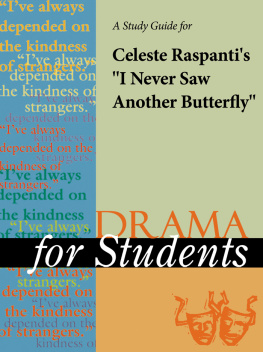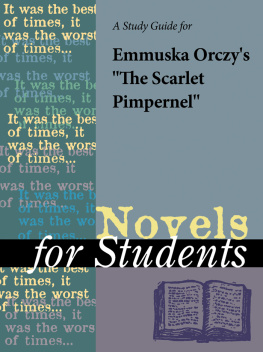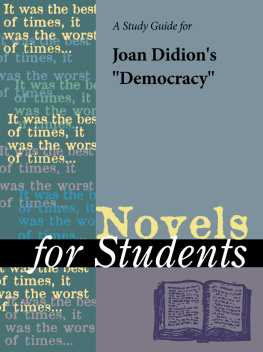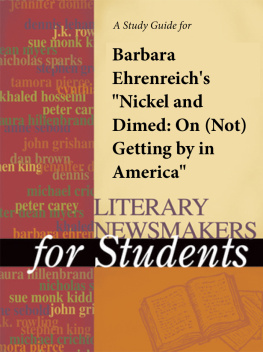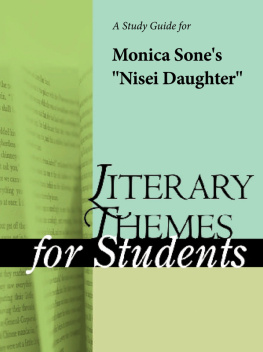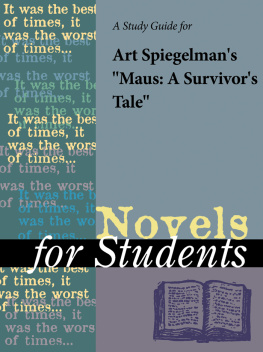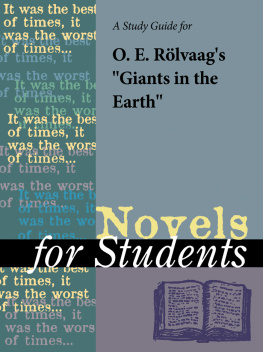TABLE OF CONTENTS
Guide
Literary Themes for Students: War and Peace, Volume 2
Project Editor
Anne Marie Hacht
Editorial
Sara Constantakis
Rights Acquisition and Management
Margaret Abendroth, Kim Smilay, and Andrew Specht
Manufacturing
Drew Kalasky
Imaging
Lezlie Light, Mike Logusz, and Kelly Quin
Product Design
Pamela A. E. Galbreath
Vendor Administration
Civie Green
Product Manager
Meggin Condino
2006 Gale, a part of Cengage Learning Inc.
Cengage and Burst Logo are trademarks and Gale is a registered trademark used herein under license.
For more information, contact
Gale, an imprint of Cengage Learning
27500 Drake Rd.
Farmington Hills, MI 48331-3535
Or you can visit our Internet site at http://www.gale.com
ALL RIGHTS RESERVED
No part of this work covered by the copyright hereon may be reproduced or used in any form or by any meansgraphic, electronic, or mechanical, including photocopying, recording, taping, Web distribution, or information storage retrieval systemswithout the written permission of the publisher.
For permission to use material from this product, submit your request via Web at http://www.gale-edit.com/permissions, or you may download our Permissions Request form and submit your request by fax or mail to:
Permissions Department
Gale, an imprint of Cengage Learning
27500 Drake Rd.
Farmington Hills, MI 48331-3535
Permissions Hotline:
248-699-8006 or 800-877-4253, ext. 8006
Fax: 248-699-8074 or 800-762-4058
Since this page cannot legibly accommodate all copyright notices, the acknowledgments constitute an extension of the copyright notice.
While every effort has been made to ensure the reliability of the information presented in this publication, Gale, an imprint of Cengage Learning does not guarantee the accuracy of the data contained herein. Gale, an imprint of Cengage Learning accepts no payment for listing; and inclusion in the publication of any organization, agency, institution, publication, service, or individual does not imply endorsement of the editors or publisher. Errors brought to the attention of the publisher and verified to the satisfaction of the publisher will be corrected in future editions.
LIBRARY OF CONGRESS CATALOGING-IN-PUBLICATION DATA
Literary themes for students-war and peace: examining diverse literature to understand and compare universal themes / Anne Marie Hacht, project editor.
p. cm.(Literary themes for students)
Includes bibliographical references and index.
ISBN 1-4144-0271-6 (set hardcover : alk. paper)
1. War in literature. 2. Peace in literature. I. Hacht, Anne Marie. II. Series.
PN56.W3L48 2006
809'.93358-dc22
2006007534
1-4144-02716 (Set), 1-4144-0272-4 (V. 1), 1-4144-0273-2 (V. 2)
This title is also available as an e-book.
ISBN 1414404964
Contact your Gale, an imprint of Cengage Learning sales representative for ordering information.
Printed in the United States of America
10 9 8 7 6 5 4 3 2 1
Persepolis: The Story of a Childhood
Marjane Satrapi
2000
Introduction
A major achievement in comics narrative, Marjane Satrapi's first major work Persepolis debuted in France in 2000 to great fanfare. The first two French volumes were translated and reprinted together in the American volume Persepolis: The Story of a Childhood in 2003. Named after the capital city of the Persian Empire, the book is an autobiographical tale set during the Islamic Revolution of Iran and the Iran-Iraq War in the 1970s and 1980s, told through a series of comics. It illustrates how civil strife within the country was as damaging, if not more so, than threats from abroad. Persepolis also dispels the one-dimensional stereotypes of Iran and Iranians, providing a complex picture of life under the regimes of both the Shah of Iran and the Ayatollah Khomeini.
Satrapi's unique position as a descendent of Persian royalty influences the narration, making it less a history and more a memoir in a historical setting. As a child, young Marji learns the history of Iran from family members who participated in important national turning points, enabling her to understand them in an intimate way. Factual details are transformed into details of the heart: how a deposed emperor's son is reduced to a broken man; how a broken marriage weighs more heavily than torture in prison; and how the children of Iran reflect the values of the adults around them.
Satrapi's artistic style is bold and straightforward, evoking the simplicity of childhood drawings and making her work immediately accessible to readers. However, she also uses a range of techniques and styles to capture different moods, alternative perspectives, and dramatic moments. In this way, her story balances the perspective of a child in wartime with the complex politics and morality of the adult world.
There are several kinds of war in Persepolis. The civil disobedience against the Shah of Iran leads to the Islamic Revolution, but the rise of the Islamic Republic government leads to a different kind of oppression that is again met with resistancealbeit in a more subtle, complex form. Satrapi casts a clear eye not only on how the Islamic Republic justifies its exceedingly harsh measures in the name of religion, but on how oppressed people assert their individuality in unexpectedly creative ways. When the war with Iraq starts in 1980, Satrapi notes the strange ways the civil unrest mixes with the national conflict.
Throughout Persepolis, a desire to live life to the fullest, to enjoy what one has even in the worst of times, is an integral concern. Readers witness contraband pop music and family celebrations, school pranks and moments of absurd irony. They also witness torture and propaganda, bombings and execution. This is indeed a very different, more complex image of Iranians: instead of Islamic fanatics who unthinkingly support the Ayatollah, they are a people who defiantly party in the face of political oppression and violent injustice, who know deep pain and suffering as well as ecstatic love and joy. As a child of these times, Satrapi captures the depth and breadth of her Iranian heritage.
Biography
Marjane Satrapi
Marjane Satrapi was born in Rasht, Iran, on November 22, 1969. Her maternal great-grandfather was Ahmad Shah Qajar, the last Qajar emperor of Iran before Reza Khan overthrew him in 1925 and took power. Satrapi's parents were very modern and progressive, and as a child Satrapi attended the Lyce Franais, one of Tehran's finest schools. At the age of fourteen, in the midst of the Iran-Iraq War, Satrapi was sent to Austria by her parents. She returned four years later, after the war ended. Satrapi attended the College of Art at an Iranian university, earning a degree, and was married for a short time before divorcing and moving to France.
Earning wide critical praise and sales, the autobiographical

